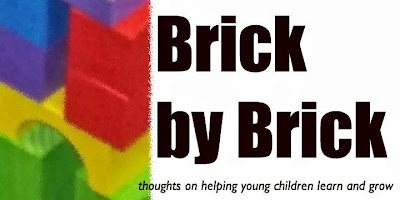Chapter 21: Should We Teach Handwriting in the Digital Age?
Chapter 22: Just Say "No" to Keyboarding in Kindergarten
Chapter 23: iPads or Play Dough?
These three chapters focused on issues related to technology and young children. As Rae Pica states in the book, the opinions on this larger topic run the gamut--from those who advocate full-on technology usage in the youngest classrooms to those who think all electronics should be banned for young kids.
Some say that we should be teaching those keyboarding skills to kids since they will use them their entire lives. Handwriting is obsolete or soon will be, they say. Kids can communicate their ideas more completely using technology since they don't have think about letter formation or stamina in writing. Technology is better because kids can focus on the ideas rather than the mechanics.
While I agree that some kids struggle with the physical demands of handwriting, I do think that kids (and adults) lose something when writing on a computer rather than by hand. When writing by hand, the writer can ponder and make a more physical connection with what is written. Ideas percolate more and can be refined before being put down on paper.
Using more technology often leads to less physical activities and less exploration with "real world" materials. While kids may love using screens for all kinds of things, they also enjoy and learn more from using their senses, moving their bodies, and handling all kinds of things. More understanding of trial and error, cause and effect, and learning from failure happens when kids are using a variety of materials and exploring and experimenting.
I think too often we see technology as THE answer. Technology (just like play dough or blocks or paint and brushes) is a tool that can aid a child's learning and pique his curiosity. I think technology should be just one part of what happens in a child's life. As with anything that comes into the classroom, it should be used intentionally and judiciously.
I would advocate a balanced and reasoned approach. Technology exists in the world of kids and should be a part of the classroom. But when it's used, it should be purposeful and intentional. It should fit with the play dough and crayons and dolls and dishes. It should follow the child's lead and interest. It should be part of the authentic learning that's happening in the classroom.
P.S. A personal peeve: "They'll need it later so we should give it to them now." Let's teach who our kids are now, not who they will be or what they might become. Let's give them what they need now. And give them what they need later when it is later.
Some links from the book---
- Why Learning to Write by Hand Matters
- Why Handwriting Still Matters in the Digital Age
- Is Teaching Keyboarding in Kindergarten Developmentally Appropriate
- How Much Technology in the Classroom Is Too Much?
- Is Technology Sapping Children's Creativity?
And a few more---



